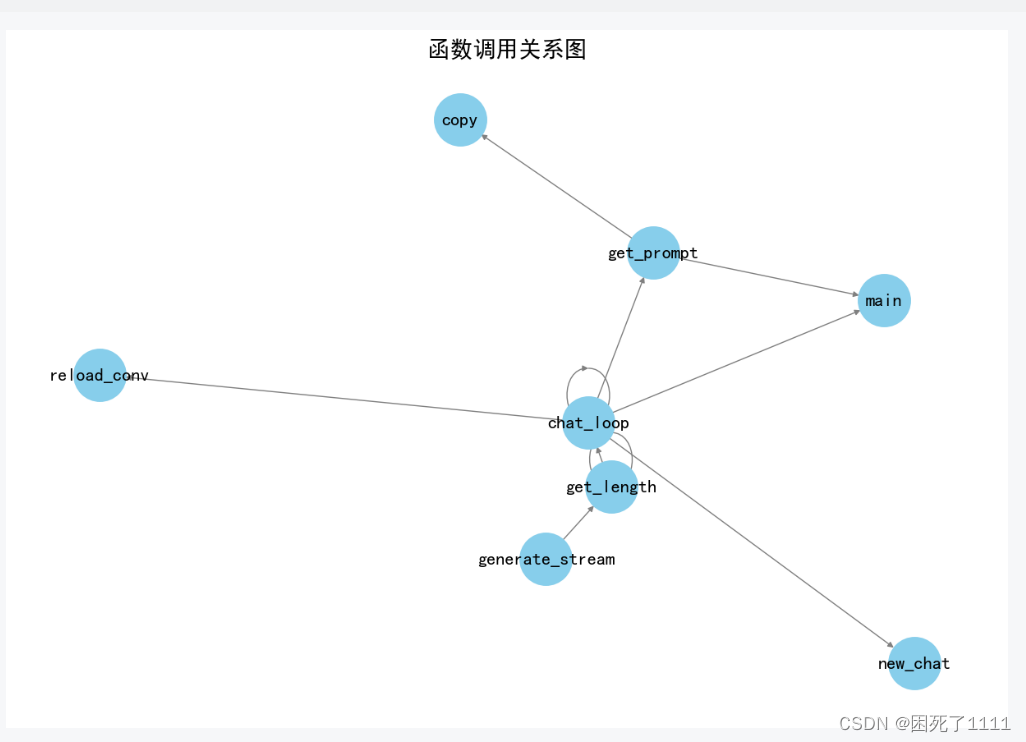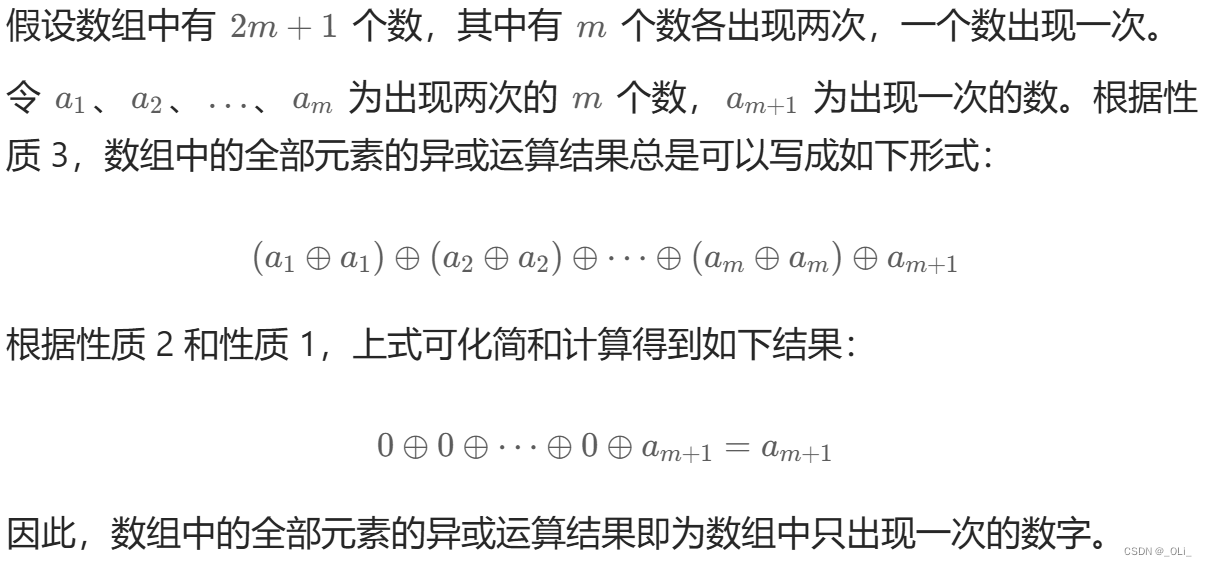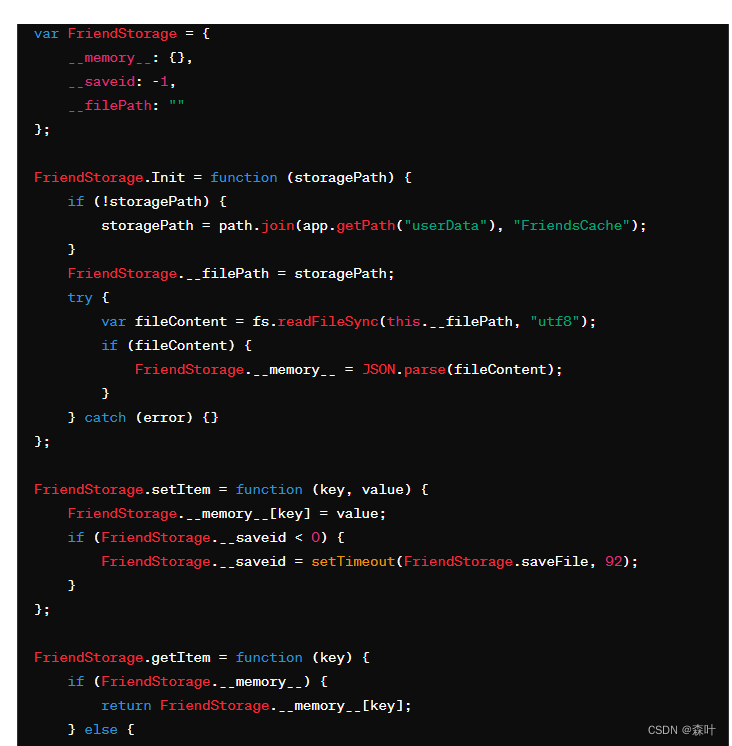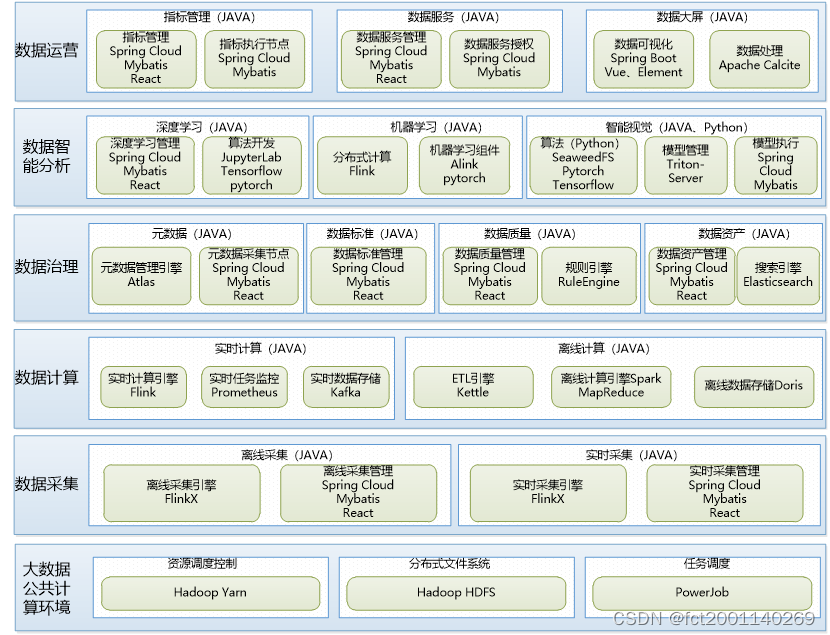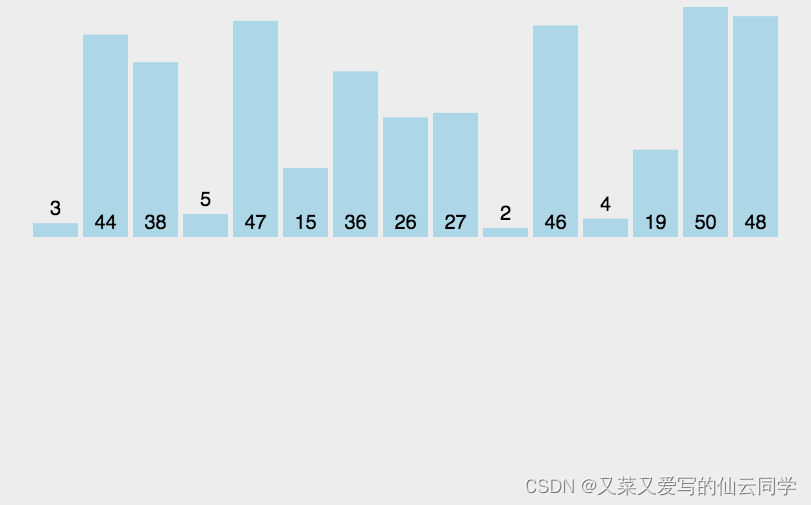目录
一 vector常见构造
1 空容器构造函数(默认构造函数)
2 Fill 构造函数
3 Range 构造函数
4 拷贝构造函数
5 C++11构造
二 vector迭代器
1 begin && end
2 rbegin && rend
3 补充排序
三 vector 容量操作
1 size
2 resize
3 capacity
4 测试1
5 empty
6 reserve
7 shrink_to_fit
8 注意
四 vector 修改操作
1 assign
2 push_back
3 pop_back
4 insert
5 erase
6 swap
7 clear
五 vector 元素访问
1 operator [ ]
2 at
3 front && back
4 find
六 总结
一 vector常见构造
1 空容器构造函数(默认构造函数)
构造一个没有元素的空容器。
2 Fill 构造函数
构造一个包含 n 个元素的容器。每个元素都是 val 的副本。
3 Range 构造函数
构造一个容器,其中包含与范围 [first,last] 一样多的元素,每个元素都按相同的顺序从该范围中的相应元素构造而成。
4 拷贝构造函数
构造一个容器,其中包含 x 中每个元素的副本,顺序相同。
#include<iostream>
#include<vector>
using namespace std;
int main()
{
vector<int> a;
vector<int> b(4, 100);//也可以只写4 构造大小和容量为4并且初始化值为0的vector
vector<int> c(b.begin(), b.end());
vector<int> d(b);
for (size_t i = 0; i < b.size(); i++)
{
cout << b[i] << ' ';
}
cout << endl;
for (size_t i = 0; i < c.size(); i++)
{
cout << c[i] << ' ';
}
cout << endl;
for (size_t i = 0; i < d.size(); i++)
{
cout << d[i] << ' ';
}
cout << endl;
a = d;//赋值拷贝
for (size_t i = 0; i < d.size(); i++)
{
cout << d[i] << ' ';
}
return 0;
}

迭代器构造能否和string产生联系?
void Test2()
{
string s("123456");
vector<int> v(s.begin(), s.end());
for (auto e : v)
{
cout << e << " ";
}
}
int main()
{
//Test1();
Test2();
return 0;
}

这里的字符1 2 3 4 5 6 对应的ASCII的值
5 C++11构造
vector<int> v1 = { 1,2,3,4,5 };
vector<int> v2{ 1,2,3,4,5 };
vector<int> v3({ 1,2,3 });
二 vector迭代器
这里只演示用法, 不做过多讲解
1 begin && end
iterator begin();const_iterator begin() const;
iterator end();const_iterator end() const;void Test3()
{
vector<int> v(4, 1);
vector<int>::iterator it = v.begin();
while (it != v.end())
{
cout << *it << ' ';
++it;
}
cout << endl;
const vector<int> vv(4, 10);
vector<int>::const_iterator itt = vv.begin();
while (itt != vv.end())
{
cout << *itt << ' ';
++itt;
}
}
2 rbegin && rend
reverse_iterator rbegin();const_reverse_iterator rbegin() const;
reverse_iterator rend();const_reverse_iterator rend() const;void Test4()
{
vector<int> v(5);
vector<int>::reverse_iterator it = v.rbegin();
int i = 1;
while (it != v.rend())
{
*it += i;
++it;
++i;
}
for (auto e : v)
{
cout << e << ' ';
}
}
这个大家就想成和begin && end 相反就行, 没啥难度
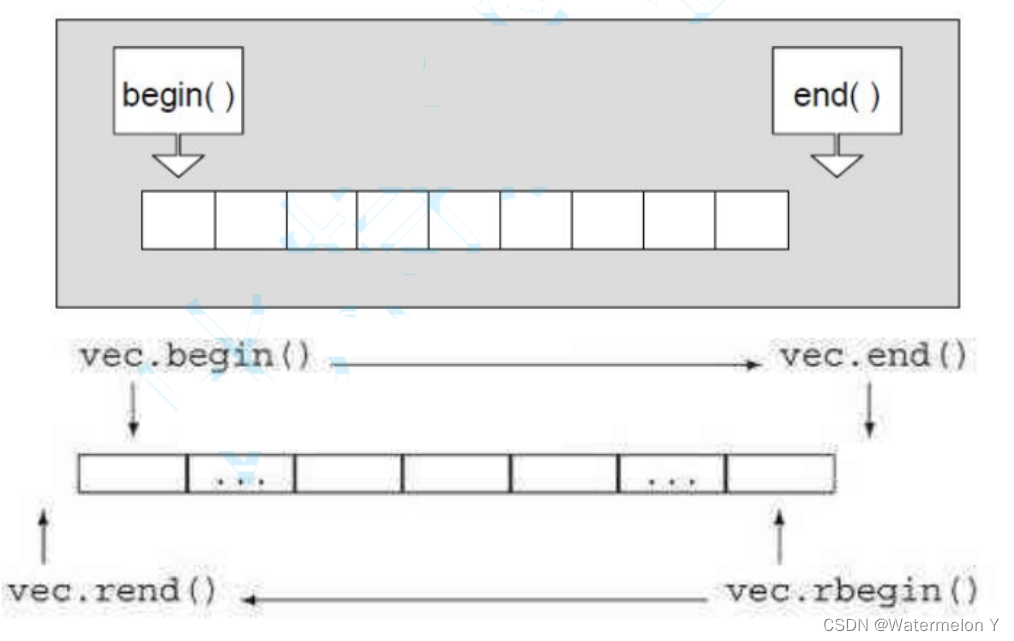
3 补充排序
#include<algorithm>
sort(v1.begin(), v1.end()); // 升序
sort(v1.begin(), v1.end(), greater<int>()); // 降序
三 vector 容量操作

这里就讲常用的, 大家看明白意思就可以直接上手, 没啥难度的
1 size
返回容器中的元素数。
size_type size() const noexcept;2 resize
调整容器的大小,使其包含 n 个元素。
void resize (size_type n);void resize (size_type n, const value_type& val);调整容器的大小,使其包含 n 个元素。
如果 n 小于当前容器大小(size),则内容将减少到其前 n 个元素,删除超出的元素(并销毁它们)。
如果 n 大于当前容器大小,则通过在末尾插入任意数量的元素来扩展内容,以达到 n 的大小。如果指定了 val,则新元素将初始化为 val。
如果 n 也大于当前容器容量(capacity),则会自动重新分配分配的存储空间。size 和 capacity都要改变
请注意,此函数通过插入或擦除容器中的元素来更改容器的实际内容
3 capacity
分配的存储容量的返回大小
此容量不一定等于向量大小。它可以相等或更大,额外的空间可以容纳增长,而无需在每次插入时重新分配。
size_type capacity() const;4 测试1
void Test5()
{
vector<int> v(5, 10);
cout << v.size() << endl;
cout << v.capacity() << endl;
v.resize(2);
cout << v.size() << endl;
cout << v.capacity() << endl;
for (auto e : v)
{
cout << e << ' ';
}
cout << endl;
v.resize(4, 10);
cout << v.size() << endl;
cout << v.capacity() << endl;
for (auto e : v)
{
cout << e << ' ';
}
cout << endl;
v.resize(10);
cout << v.size() << endl;
cout << v.capacity() << endl;
}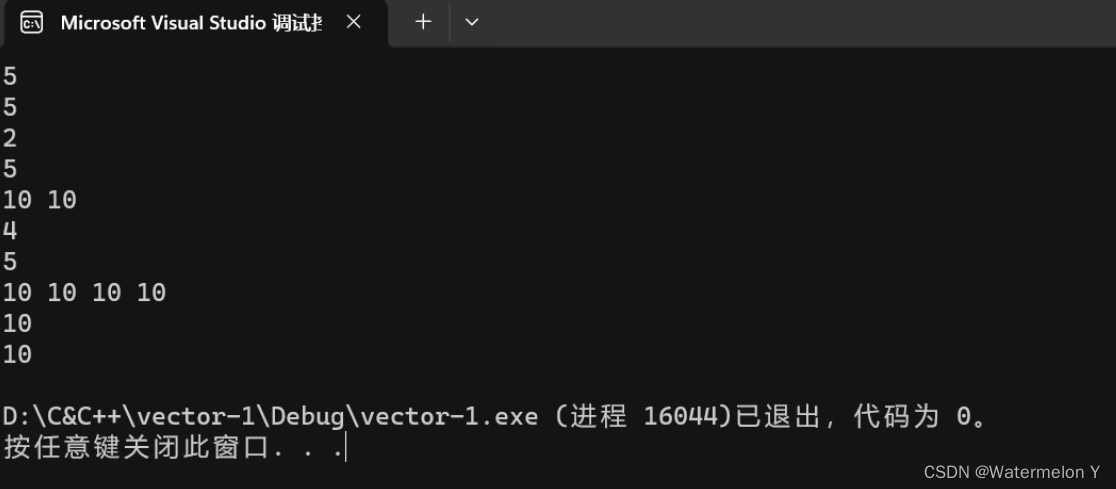
5 empty
返回向量是否为空(即其大小是否为 0)。
bool empty() const;6 reserve
void reserve (size_type n);请求容器容量至少足以包含 n 个元素。
如果 n 大于当前容器容量,则该函数会导致容器重新分配其存储,从而将其容量增加到 n(或更大)。
在所有其他情况下,函数调用不会导致重新分配,并且容器容量不受影响。
此函数对容器大小(size)没有影响,并且不能更改其元素。
void Test6()
{
vector<int> v(5, 10);
cout << v.size() << endl;
cout << v.capacity() << endl;
v.reserve(1);
cout << v.size() << endl;
cout << v.capacity() << endl;
v.reserve(100);
cout << v.size() << endl;
cout << v.capacity() << endl;
v.reserve(50);
cout << v.size() << endl;
cout << v.capacity() << endl;
}
7 shrink_to_fit
请求容器减小其容量以适合其大小。
void shrink_to_fit();void Test7()
{
vector<int> v(4, 100);
cout << v.size() << endl;
cout << v.capacity() << endl;
v.reserve(100);
cout << v.size() << endl;
cout << v.capacity() << endl;
v.shrink_to_fit();
cout << v.size() << endl;
cout << v.capacity() << endl;
}

8 注意
capacity的代码在vs和g++下分别运行会发现,vs下capacity是按1.5倍增长的,g++是按2倍增长的。
这个问题经常会考察,不要固化的认为,vector增容都是2倍,具体增长多少是根据具体的需求定义的。vs是PJ版本STL,g++是SGI版本STL。
reserve只负责开辟空间,如果确定知道需要用多少空间,reserve可以缓解vector增容的代价缺陷问题。
resize在开空间的同时还会进行初始化,影响size.
四 vector 修改操作
 有些用法我没有演示出来, 因为实际应用的时候基本用不到, 大家如果感兴趣也可以查阅文档, 非常容易上手
有些用法我没有演示出来, 因为实际应用的时候基本用不到, 大家如果感兴趣也可以查阅文档, 非常容易上手
1 assign
为容器分配新内容,替换其当前内容,并相应地修改其大小
range(1)
template <class InputIterator> void assign(InputIterator first, InputIterator last);
fill(2)
void assign(size_type n, const value_type& val);
initializer list(3)
void assign(initializer_list<value_type> il);
void Test8()
{
vector<int> a(5, 10);
cout << a.size() << endl;
cout << a.capacity() << endl;
a.assign(6, 1);
for (auto e : a)
{
cout << e << ' ';
}
cout << endl;
cout << a.size() << endl;
cout << a.capacity() << endl;
vector<int> b;
b.assign(a.begin(), a.end() - 1);
for (auto e : b)
{
cout << e << ' ';
}
}
2 push_back
在容器末尾的当前最后一个元素之后添加一个新元素。val 的内容被复制(或移动)到新元素。
void push_back (const value_type& val);
void push_back (value_type&& val);void Test9()
{
vector<int> v(4);
v.push_back(1);
v.push_back(2);
v.push_back(3);
for (auto e : v)
{
cout << e << ' ';
}
}
3 pop_back
删除容器中的最后一个元素,从而有效地将容器大小减小 1。
void pop_back();4 insert
过在指定位置的元素之前插入新元素来扩展容器,从而有效地通过插入的元素数增加容器大小
single element(1)
iterator insert(const_iterator position, const value_type& val);
fill(2)
iterator insert(const_iterator position, size_type n, const value_type& val);
range(3)
template <class InputIterator>iterator insert(const_iterator position, InputIterator
first, InputIterator last);
move(4)
iterator insert(const_iterator position, value_type&& val);
initializer list(5)
iterator insert(const_iterator position, initializer_list<value_type> il);
void Test10()
{
vector<int> v(4, 10);
v.insert(v.begin(), 100);
for (auto e : v)
{
cout << e << ' ';
}
cout << endl;
v.insert(v.end(), 4, 100);
for (auto e : v)
{
cout << e << ' ';
}
cout << endl;
}
5 erase
从容器中删除单个元素 (position) 或一系列元素 ( [first,last))
iterator erase (const_iterator position);
iterator erase (const_iterator first, const_iterator last);void Test11()
{
vector<int> v;
v.push_back(1);
v.push_back(2);
v.push_back(3);
v.push_back(4);
v.erase(v.begin());
for (auto e : v)
{
cout << e << ' ';
}
cout << endl;
v.erase(v.begin(), v.begin()+2);
for (auto e : v)
{
cout << e << ' ';
}
cout << endl;
}
6 swap
通过 x 的内容交换容器的内容,x 是另一个相同类型的容器对象。size可能有所不同。
void swap (vector& x);void Test12()
{
vector<int> v1(4, 10);
for (auto e : v1)
{
cout << e << ' ';
}
cout << endl;
vector<int> v2(4, 1);
v1.swap(v2);
for (auto e : v1)
{
cout << e << ' ';
}
cout << endl;
}
7 clear
从容器中删除所有元素(这些元素被销毁),使容器的大小为0。
void clear() noexcept;void Test13()
{
vector<int> v(1, 4);
for (auto e : v)
{
cout << e << ' ';
}
cout << endl;
v.clear();
cout << v.size() << endl;
cout << v.capacity() << endl;
for (auto e : v)
{
cout << e << ' ';
}
cout << endl;
}

五 vector 元素访问

1 operator [ ]
reference operator[] (size_type n);
const_reference operator[] (size_type n) const;void Test14()
{
vector<string> v;
v.push_back("hello");
v.push_back("world");
cout << v[0] << endl;
cout << v[1] << endl;
cout << v[0][1] << endl;
cout << v[0][2] << endl;
}

2 at
返回对容器中位置 n 处的元素的引用。
该函数会自动检查 n 是否在容器中有效元素的范围内,如果不是,则抛出out_of_range异常(即,如果 n 大于或等于其大小)。这与成员 operator[] 形成鲜明对比,后者不检查边界。
void Test15()
{
vector<int> v;
v.push_back(1);
v.push_back(2);
cout << v[0] << endl;
cout << v.at(0) << endl;
}

3 front && back
void Test16()
{
vector<int> v;
v.push_back(1);
v.push_back(2);
v.push_back(3);
cout << v.front() << endl;
cout << v.back() << endl;
}
4 find
template<class InputIterator, class T>
InputIterator find (InputIterator first, InputIterator last, const T& val)在迭代器范围内寻找val, 如果 没找到, 那就返回v.end()
void Test17()
{
vector<int> v;
v.push_back(1);
v.push_back(3);
v.push_back(2);
v.push_back(0);
vector<int>::iterator pos = find(v.begin(), v.end(), 2);
if (pos != v.end())
{
v.insert(pos, 300);
}
for (auto e : v)
{
cout << e << ' ';
}
}
另一个测试:
int main()
{
vector<int> v(1);
v.push_back(1);
v.push_back(2);
v.push_back(3);
v.push_back(4);
vector<int>::iterator pos = find(v.begin(), v.end(), 9);
v.insert(pos, 100);
for (auto e : v)
{
cout << e << ' ';
}
return 0;

六 总结
好久没写博客了, 非常的抱歉. 很长一段时间都在学习Linux, 还是比较困难的. 中间也有一段时间摆烂. 幸好又复活过来了. 感谢所有支持我的人的陪伴吧!
vector这节用法非常简单的, 如果大家感觉概念和理解还是差点意思的话, 一定看看我前面写的 string, 里面对一些概念进行了详细讲解, 当然后续我也会出简单的模拟实现, 大家看了底层, 就更容易懂了.





